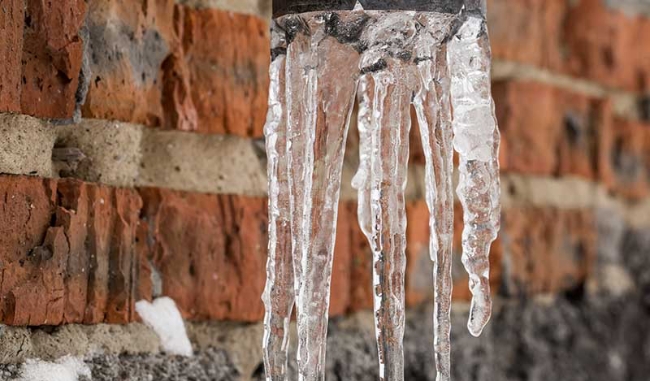Ways to Protect Pipes from Freezing: Expert Tips
Ways to Protect Pipes from Freezing: Expert Tips
Blog Article
This great article following next on the subject of Preventing and dealing with frozen pipes is definitely engaging. Read on and draw your own final thoughts.

Winter can wreak havoc on your pipes, especially by freezing pipelines. Below's just how to prevent it from happening and what to do if it does.
Introduction
As temperatures decrease, the danger of icy pipelines boosts, possibly resulting in pricey repair services and water damage. Understanding how to avoid icy pipelines is crucial for homeowners in cool climates.
Prevention Tips
Shielding prone pipes
Cover pipes in insulation sleeves or use heat tape to secure them from freezing temperatures. Focus on pipes in unheated or outside areas of the home.
Heating strategies
Keep interior rooms sufficiently heated up, especially locations with pipes. Open up cabinet doors to enable cozy air to distribute around pipes under sinks.
Exactly how to identify frozen pipelines
Try to find lowered water circulation from taps, unusual smells or noises from pipes, and visible frost on subjected pipes.
Long-Term Solutions
Architectural modifications
Consider rerouting pipelines away from exterior wall surfaces or unheated areas. Include extra insulation to attics, basements, and crawl spaces.
Upgrading insulation
Invest in premium insulation for pipes, attics, and walls. Appropriate insulation aids keep regular temperature levels and reduces the risk of frozen pipelines.
Shielding Exterior Pipes
Garden hose pipes and outdoor taps
Detach and drain garden tubes before winter months. Install frost-proof faucets or cover outside faucets with shielded caps.
Understanding Icy Pipelines
What causes pipes to ice up?
Pipes ice up when revealed to temperatures below 32 ° F (0 ° C) for expanded periods. As water inside the pipelines ices up, it increases, taxing the pipeline walls and possibly creating them to burst.
Risks and damages
Icy pipes can lead to water supply disturbances, property damages, and pricey fixings. Ruptured pipes can flood homes and trigger substantial architectural damages.
Indications of Frozen Water Lines
Recognizing frozen pipes early can prevent them from breaking.
What to Do If Your Pipelines Freeze
Immediate actions to take
If you think icy pipelines, keep taps open up to eliminate pressure as the ice thaws. Make use of a hairdryer or towels soaked in hot water to thaw pipelines slowly.
Conclusion
Stopping frozen pipelines requires aggressive steps and fast actions. By understanding the reasons, indicators, and preventive measures, home owners can secure their pipes during winter.
5 Ways to Prevent Frozen Pipes
Drain Outdoor Faucets and Disconnect Hoses
First, close the shut-off valve that controls the flow of water in the pipe to your outdoor faucet. Then, head outside to disconnect and drain your hose and open the outdoor faucet to allow the water to completely drain out of the line. Turn off the faucet when done. Finally, head back to the shut-off valve and drain the remaining water inside the pipe into a bucket or container. Additionally, if you have a home irrigation system, you should consider hiring an expert to clear the system of water each year.
Insulate Pipes
One of the best and most cost-effective methods for preventing frozen water pipes is to wrap your pipes with insulation. This is especially important for areas in your home that aren’t exposed to heat, such as an attic. We suggest using foam sleeves, which can typically be found at your local hardware store.
Keep Heat Running at 65
Your pipes are located inside your walls, and the temperature there is much colder than the rest of the house. To prevent your pipes from freezing, The Insurance Information Institute suggests that you keep your home heated to at least 65 degrees, even when traveling. You may want to invest in smart devices that can keep an eye on the temperature in your home while you’re away.
Leave Water Dripping
Moving water — even a small trickle — can prevent ice from forming inside your pipes. When freezing temps are imminent, start a drip of water from all faucets that serve exposed pipes. Leaving a few faucets running will also help relieve pressure inside the pipes and help prevent a rupture if the water inside freezes.
Open Cupboard Doors
Warm your kitchen and bathroom pipes by opening cupboards and vanities. You should also leave your interior doors ajar to help warm air circulate evenly throughout your home.

Hopefully you liked our section on Winter Plumbing Precautions: Preventing Frozen Pipes. Many thanks for taking time to read our blog. So long as you enjoyed our blog post plz do not forget to pass it around. Thanks for being here. Come back soon.
Click Here Report this page